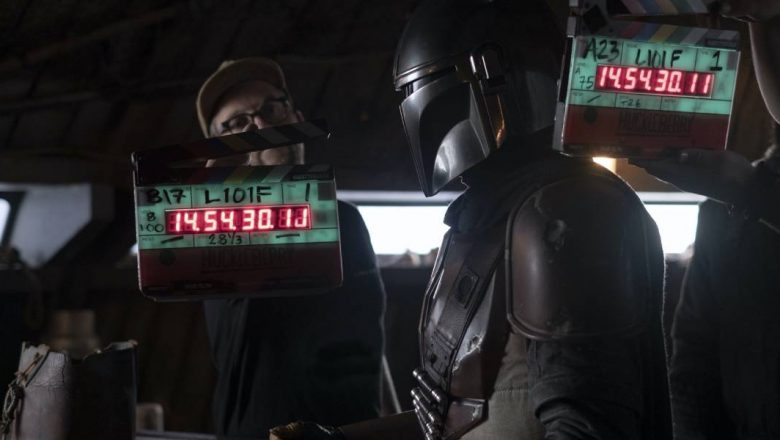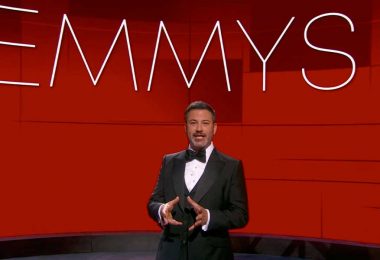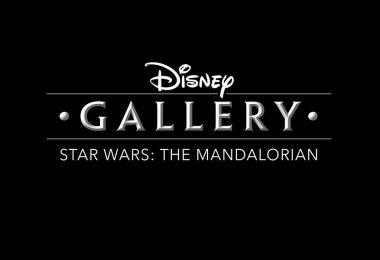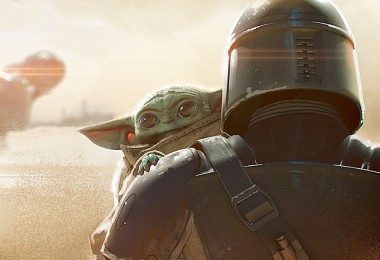By Jocelyn Buhlman
We’re only days away from the debut of season two of The Mandalorian on Disney+, although we wish we could make the lightspeed jump to October 30 and start watching right now! It might take a Jedi-like level of discipline to wait until the end of the week… Or, we can bide our time with a Disney+ marathon or two. Beyond reliving the excitement of season one of The Mandalorian, you can discover how the galaxy was created in Disney Gallery: The Mandalorian. The eight-episode docuseries on Disney+ provides roundtable conversations with the series’ creative team, along with behind-the-scenes footage of making the show. It’s full of fascinating facts, and we’ve rounded up some of our favorites to share with you as we await The Mandalorian season two. If you want to learn even more about the behind-the-scenes action of The Mandalorian, you can stream Disney Gallery: The Mandalorian on Disney+ now.
This article contains spoilers for the first season of The Mandalorian.
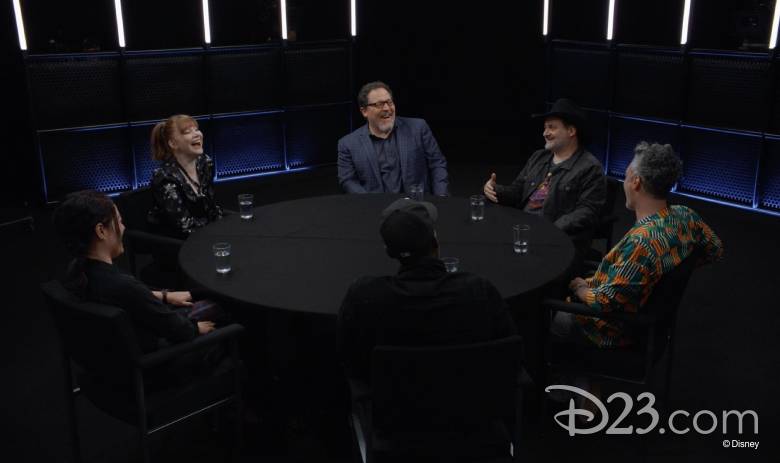
1. The first season was a collaboration between all the directors.
Deborah Chow, Rick Famuyiwa, Dave Filoni, Bryce Dallas Howard, and Taika Waititi were all often on set for episodes beyond the ones they directed themselves. This level of collaboration allowed the directors to work together not only to develop ideas, but to keep their stories consistent across episodes. As Filoni explains, “Everybody’s bringing their unique perspective to this, and I think that ultimately makes us stronger, makes this a better story. They all ask questions about the scripts and Jon [Favreau] and I are like ‘… Ooooh, we didn’t see that.’ But then we’re willing to fix it and we find new ways to do things.”
Chow agrees that the process allowed for more creativity in the Star Wars galaxy: “We could also bounce ideas off of each other, too, to say ‘What do you think of this?’ or ‘Does this make sense?’”
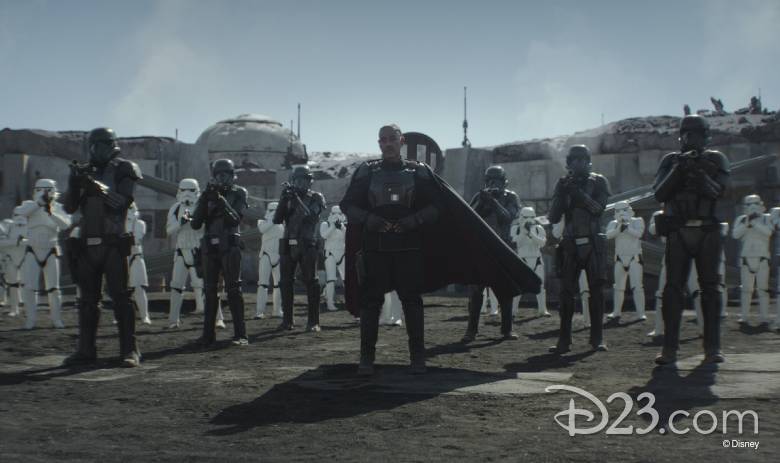
2. The Darksaber was a practical effect.
One of the coolest moments of season one (and it’s hard to narrow it down, since there are a lot of cool moments in The Mandalorian) was the reveal of the Darksaber—and that Moff Gideon (Giancarlo Esposito) was in possession of the legendary weapon. Even cooler than that reveal? The Darksaber was actually a practical effect! In previous Star Wars films, the blades of characters’ lightsabers have been added in with visual effects after filming, (although it’s not hard to play pretend with a lightsaber—just ask anyone who’s wielded an empty wrapping paper tube, broom, pencil…. You get the gist!) so the Darksaber being an in-camera effect is especially unique to the Star Wars franchise.
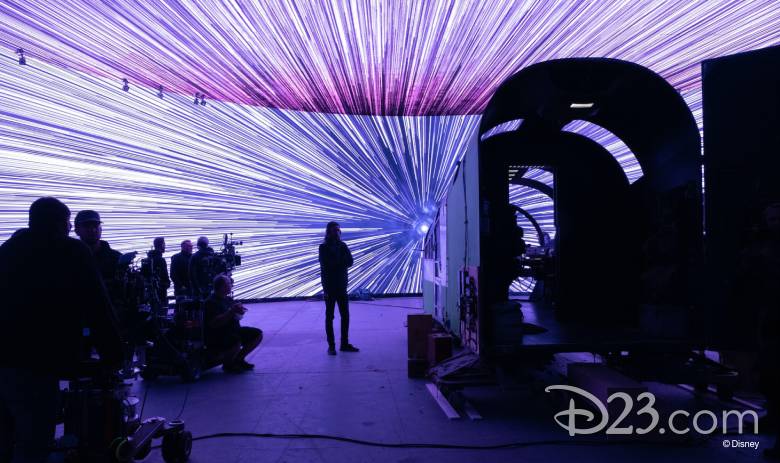
3. Parts of the series were filmed in a technologically advanced soundstage called The Volume.
To transport viewers to a galaxy far, far away, The Mandalorian utilized a new (and extremely awesome) stage called The Volume, which is a stage surrounded by high-definition video screens. The Volume allows any kind of landscape or setting to be projected on the screens, so actor can seamlessly perform in any surroundings in real time. In fact, this was a milestone for filming, as Favreau explains, “The Mandalorian is the first production ever to use real-time rendering and video wall in-camera set extensions and effects.” The benefits of this technology extend to even the smallest details: Because the projections exist in real time, landscape and props would properly reflect onto anything on the stage, meaning nothing needed to be added in for post-production!
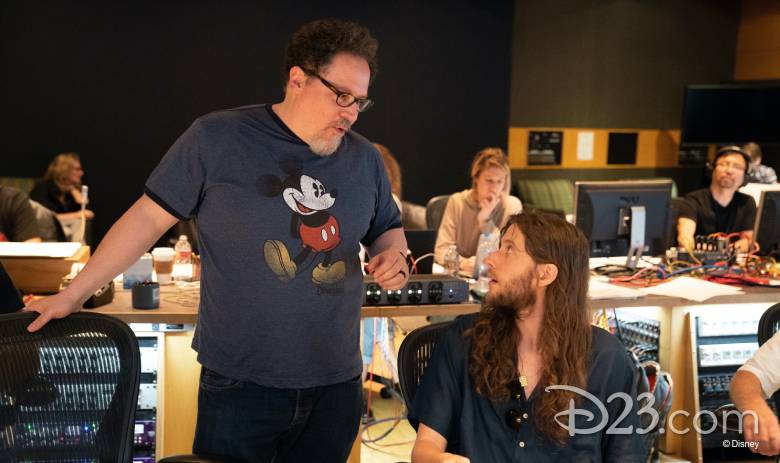
4. Ryan Coogler and Donald Glover Recommended Composer Ludwig Göransson.
One of the most iconic aspects of The Mandalorian (that’s not related to any kind of small green child) is its Western-inspired score. The music makes you want to strap on your Mandalorian armor and explore a far-away desert. But, we wouldn’t have this iconic score without some help from two friendly faces from the Disney family. As we learned in the episode “Score,” Black Panther director Ryan Coogler recommended Ludwig Göransson to Favreau after Göransson lent his musical mastery to the score of Marvel Studios’ Black Panther. Additionally, Donald Glover, who’d worked with Favreau in both 2019’s The Lion King and 2018’s Solo: A Star Wars Story suggested Göransson, as the composer had worked closely with Glover during his musical career and his television series Atlanta.
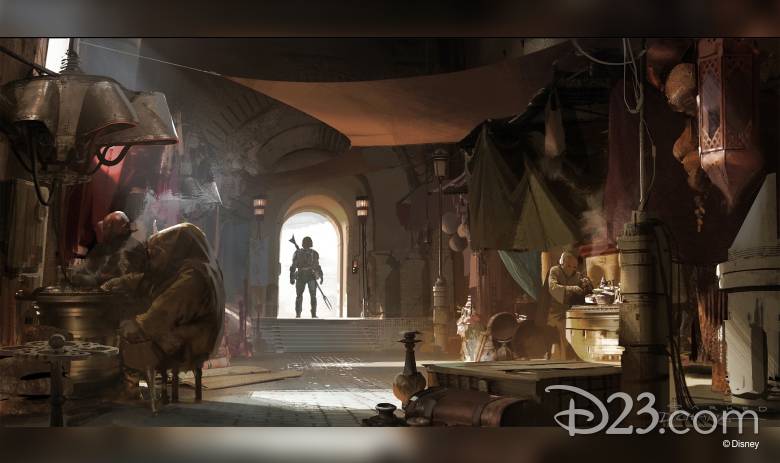
5. There are just so, so many Easter eggs
The final episode of the Disney Gallery: The Mandalorian, “Connections,” reveals a galaxy’s worth of Easter eggs in The Mandalorian, but here are some of our favorites:
- Blurrgs, the beasts owned and trained by Kuiil, first appeared in the 1985 TV movie Ewoks: Battle For Endor, and had also previously appeared in the critically acclaimed animated series Star Wars: The Clone Wars and Star Wars Rebels
- Disney Legend (and, you know, Luke Skywalker) Mark Hamill has a voice cameo in “Chapter 5: The Gunslinger” as the droid bartender in the Mos Eisley Cantina. Hamill has previously voiced characters in Star Wars: The Rise of Skywalker, Star Wars: The Last Jedi, and Star Wars: The Clone Wars, so this carries on a long-held tradition of keeping your ears open for a familiar voice.
- You might already know that directors Dave Filoni, Rick Famuyiwa, and Deborah Chow have cameos in The Mandalorian’s sixth episode, “The Prisoner,” but do you know how their cameos connect to Star Wars: Galaxy’s Edge? All three directors filmed their cameos inside the X-Wing fighter that would later be placed in the Resistance camp at Disney’s Hollywood Studios.
- R5-D4, the droid Owen Lars almost buys before purchasing R2-D2 instead, is still at the Mos Eisley Cantina—and it looks like his motivator never did get repaired!
We’ve only scratched the surface of the details included in the series—watch the “Connections” episode to discover more (including one Easter egg based on an infamous ice cream maker-turned-prop from Star Wars: The Empire Strikes Back).
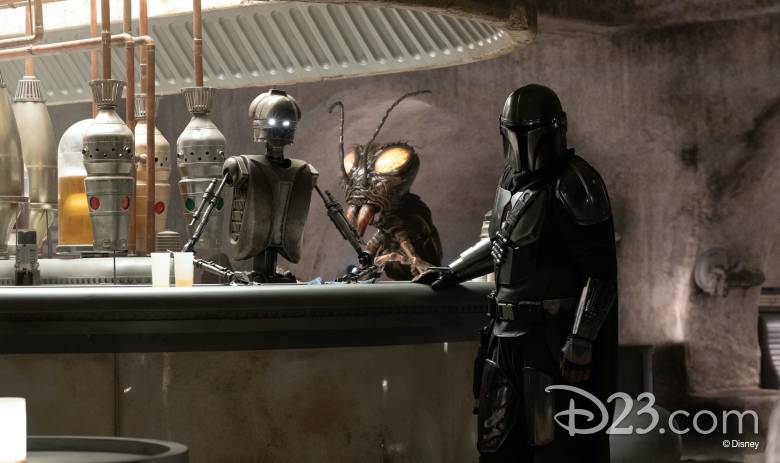
6. The series relied on storyboarding and previsualization to plan everything
In the docuseries episode “Visualization,” we learned that episodes of The Mandalorian were storyboarded, a process Favreau learned from the creative teams at Walt Disney Animation Studios and Pixar Animation Studios, along with making his own films The Jungle Book and The Lion King. “It forces the filmmakers to commit early, and understand and fail early, when it’s cheap and easy,” he explains.
The storyboards were then taken to a CGI pre-visualization stage, so that the directors knew exactly what they were doing with the story before they started filming. This often helped the team solve problems before anyone even walked on set. For example, the prison guards in the sixth episode of The Mandalorian were originally floating, bucket-like droids, but the pre-visualization stage allowed Famuyiwa, the episode’s director, to realize that the fight scene would be more effective if the droids had arms and legs. Since everything was filmed in The Volume, it was essential to catch mistakes ahead of time to make the physical filming process as efficient as possible.

7. The Child was just called “Baby” on set
To be fair, that’s what we’d call it, too.
Season two of The Mandalorian starts streaming on Disney+ on October 30.



